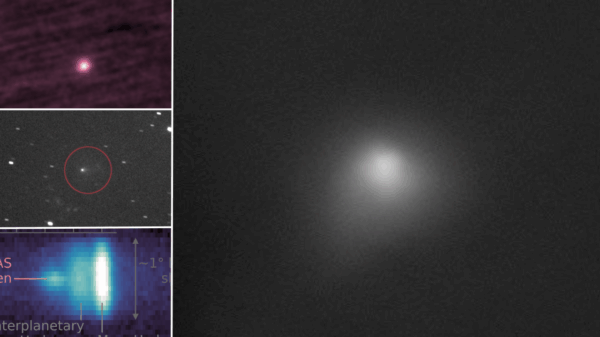A groundbreaking study utilizing wearable brain imaging technology has revealed significant differences in brain function among individuals with multiple sclerosis (MS). Conducted by researchers at the University of Nottingham, this pioneering work marks the first application of this advanced technology in the study of MS, showcasing its potential for understanding neurological diseases more comprehensively.
Multiple sclerosis is a chronic autoimmune condition that disrupts the brain and spinal cord. The immune system erroneously attacks and damages myelin, a protective fatty substance that insulates nerve fibers. This damage interferes with electrical signals traveling along the nerves, resulting in a wide array of neurological symptoms, including numbness, vision issues, balance problems, and fatigue.
Researchers employed a novel OPM-MEG (Magnetoencephalography with Optically Pumped Magnetometers) scanner, which features a lightweight helmet and a compact control unit that can be worn during various activities. Unlike traditional MRI imaging, which focuses on brain structure, OPM-MEG assesses real-time brain function by measuring the magnetic fields produced by electrical currents in neuron assemblies.
In experiments involving participants with and without MS, the team demonstrated how demyelination impacts neural circuits, particularly in the visual system. They observed that the area of the brain responsible for movement exhibited slower responses in individuals with MS. Given that balance issues are prevalent among those with the condition, the researchers also analyzed brain activity while subjects stood. They discovered that the brain rhythms indicative of healthy cortical function changed more significantly in participants with MS compared to those without the disease.
The findings were published in the journal NeuroImage: Clinical. Among the participants was Pietro Navarra, who was diagnosed with Primary Progressive Multiple Sclerosis (PPMS) two years ago. Navarra expressed his motivation for participating in the research, stating, “PPMS has an impact on my short-term memory and routinely makes me feel fatigued. I wanted to support any developments that could help myself and others.” He emphasized his hope that this research might lead to targeted treatments for different brain areas affected by MS.
Leading the study, Ben Sanders, a Ph.D. student in physics at the University of Nottingham, stated, “OPM-MEG can record how the brain is working in real-time, in a range of postures, and during natural movements. Our paper shows that this unique capability can bring new insights to MS.”
Co-researcher Christopher Gilmartin, from the School of Medicine and Health Sciences, added, “We are now building on this with further research to track brain activity in people with MS over time. In the long term, OPM-MEG may help us predict which individuals’ MS symptoms will worsen and those who will have more stable disease.” This predictive capability could significantly enhance treatment strategies for MS patients.
Nikos Evangelou, Clinical Professor of Neurology and MS research lead at the University of Nottingham, noted the complexity of MS symptoms, stating, “The symptoms of MS are unpredictable and differ between individuals. This makes managing the condition very difficult. Knowing exactly how the brain is affected in people with MS is a significant step in understanding how symptoms occur.”
The innovative use of OPM-MEG could lead to advancements in how MS is managed and treated. As researchers continue to explore this technology, they aim to refine diagnostic processes and develop targeted interventions that address MS progression effectively. The implications of this research could pave the way for improved quality of life for those living with multiple sclerosis.
For further details, refer to the study: Benjamin J. Sanders et al., “OPM-MEG in multiple sclerosis: Proof of principle, and the effect of naturalistic posture,” NeuroImage: Clinical, March 2025, DOI: 10.1016/j.nicl.2025.103888.




































































